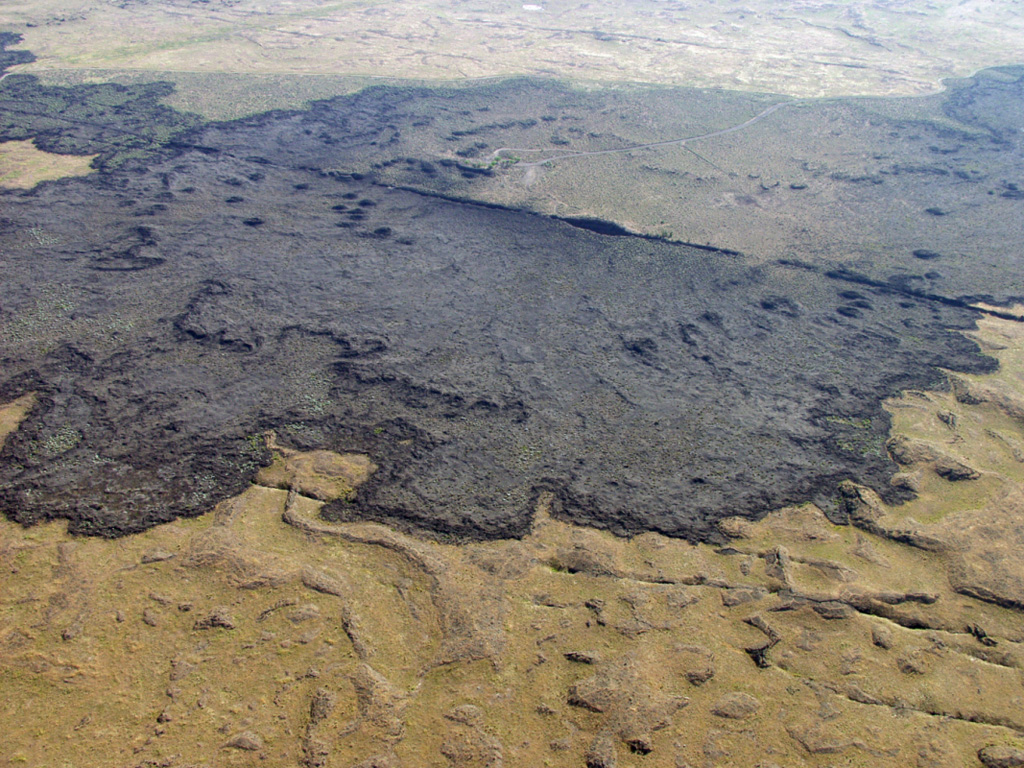Image GVP-10268

The dramatic Kings Bowl rift cutting diagonally across the top of the photo produced a small 6-sq-km lava field about 2250 years ago immediately north of the much larger Wapi lava field. Kings Bowl itself is the small elongated crater on the right-center side of the rift in this photo; it formed during a phreatic explosion that deposited lighter-colored tephra to the east (upper right). The massive Wapi lava field, located out of view south (right) of Kings Bowl, covers an area of about 325 km2 and originated from Pillar Butte, a small shield volcano.
Photo by Susan Sakimoto (NASA, courtesy of Scott Hughes, Idaho State University).
![]() This image is made available under the Creative Commons BY-NC 4.0 license terms.
This image is made available under the Creative Commons BY-NC 4.0 license terms.

Wapi Lava Field
